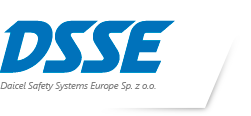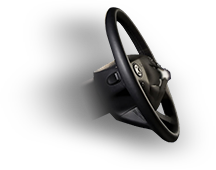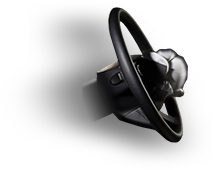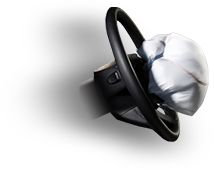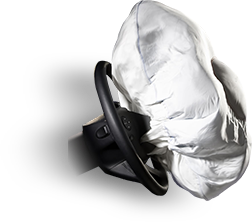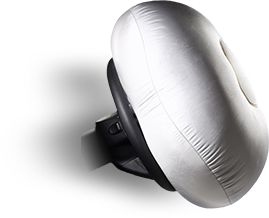Polyplastics owned by Daicel!
We have decided to acquire all the shares of our consolidated subsidiary Polyplastics Co., Ltd. (55% owned by Daicel and 45% by Celanese) held by Celanese Corporation to make Polyplastics a wholly owned subsidiary of Daicel.
Polyplastics was established in 1964 as a joint venture with Celanese and opened up a new market called engineering plastics, which is a plastic that supersedes metals. By providing materials for automobiles, electrical equipment, precision machinery and the like, today it has become an important company that accounts for over 30% of our consolidated sales.
For example, Polyplastics has the world’s largest share in the polyacetal (POM) market. Years ago, our competitor’s TV advertisement of plastic eggs that could be coated was broadcasted for a TV program called “Naruhodo! The World.” That coatable plastic was polyacetal. Now, we can see engineering plastics used in most of the coatedparts of the automobile interior.
In recent years, our competing relationship with another parent company, Celanese, has intensified in various aspects and led to business constraints and a lack of speed in decision-making, resulting in the loss of opportunities. With the acquisition of all of the shares, we are now able to make unified management decisions and drive our business forward faster in a broad range.
The conversion into our wholly owned subsidiary signifies that we have moved from the Original Daicel, OP-I, to the New Daicel, OP-II, as set forth in our recently announced long-term vision “DAICEL VISION 4.0” and our new medium-term strategy “Accelerate 2025,” which was formulated based on the “DAICEL VISION 4.0.” Making Polyplastics a wholly owned subsidiary was thus a necessary action for us to realize our new mid-term and long-term plans. We can say that we have taken a major step toward realization of the plans.
Besides the establishment of Daicel Miraizu Ltd. on July 1st of this year, in making Polyplastics our wholly owned subsidiary and in other joint ventures, we have undertaken actions and reviews toward further progress.
1. Future governance
The title includes the phrase of “making a wholly-owned subsidiary,” which gives an image that we are assuming control, but this is only in the stock ownership.
This April, aiming to transform into a value-providing company, the Daicel Group abolished its conventional company system and adopted a business unit (BU) system.
The OP-III of our medium-term strategy also envisions that the Company will transform into a form similar to a holding company. As with BUs, each operating unit is supposed to be independent and self-driven, and businesses that produce more synergistic effects if performed interdepartmentally are to be shared across the entire Group. That being said, basically, we regard respective units’ independence and initiative highly, and delegate significant authority to them so they can carry out speedy and flexible management.
With its great brand power, Polyplastics is developing a global strategy based on the idea of the “Polyplastics Way.” We will continue to respect its originality. On the other hand, we want them to make sure what will be more efficient if performed interdepartmentally are shared across the entire Group. I hope that it will further enhance its uniqueness.
These also apply to respective BUs. I believe it is important to further develop our strengths while receiving the support of the Group for our weak points in order to grow together.
2. Significance of making a wholly owned subsidiary
[1] All profits that have been excluded as Celanese’s share will belong to the Daicel Group, leading to an increase in net income attributable to the Company (shareholders) and an improvement in return on equity (ROE). (Although equity ratio will decrease and interest-bearing debt ratio will increase temporarily, we can handle such situation so it will not exert any material impact on the financial soundness for maintaining our funding capacity.)
[2] We can set up new bases and have more bases in areas (the US and European markets) where we have not had a sufficient number of bases to expand our business.
[3] We can accelerate important management decisions, such as expansion/new construction of our bases, business restructuring and M&A.
[4] We can execute group financial strategies designed to maximize asset efficiency and optimize capital structure.
[5] We aim to maximize expected synergetic effects with the Daicel Group as described below.
3. Our expectations
[1] In strengthening cooperation in the plastics field, which has the highest sales ratio in the Daicel Group, sales expansion is expected by having business lines in common and expanding the range of functional design.
[2] We can raise efficiency by integrating corporate functions, consolidating office functions and cooperating in sales activities at each global base. Additionally, improvement of human productivity is expected by coordinating engineering and maintenance functions, distributing workload more evenly through standardization of recruitment procedure and active personnel exchanges, and by sharing know-how.
[3] Accelerating new business creation
Polyplastics’ areas of focus are consistent with those of other BUs, which can accelerate the creation of new businesses in cooperation with the Group and increase the value of solutions we provide.
I believe that this action, which we expect to become a major step toward the realization of our new mid-term and long-term plans, will bring us more-than-expected results through active mutual “meddling.”
Yoshimi Ogawa
President and CEO
